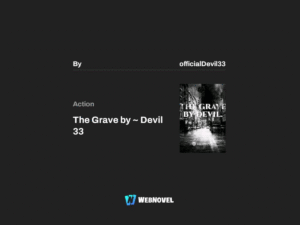Science & Nature Update: July 16, 2025 – Perseid Meteor Shower Begins Tonight

One of the most anticipated celestial events of the year kicks off tonight as the Perseid Meteor Shower 2025 lights up the night sky. Known for its bright fireballs and fast moving meteors, the Perseids are a spectacular natural phenomenon that draws skywatchers and astronomers from across the globe.
The meteor shower will remain active from July 16 to August 23, with the peak expected between August 11 and 13. During this period, viewers can expect to see up to 100 meteors per hour in ideal conditions.
What Causes the Perseid Meteor Shower?
The Perseid Meteor Shower occurs annually when Earth passes through the debris trail left by Comet Swift-Tuttle. These particles—some no bigger than grains of sand—enter Earth’s atmosphere at high speeds and burn up, creating bright, fiery streaks in the sky.
The meteors appear to originate from the constellation Perseus, hence the name “Perseids.” However, they are visible across large portions of the sky, especially during peak nights with minimal moonlight interference.
🗓 Key Dates and Viewing Information
Start Date: July 16, 2025
End Date: August 23, 2025
Peak Dates: August 11, 12, and 13
Best Viewing Time: Between 2:00 AM and 4:00 AM
Visibility: Best in the Northern Hemisphere, especially in rural areas with dark skies
This year, the moon will be in a favorable waning crescent phase during the peak nights, offering excellent visibility for both casual observers and astrophotographers.
Where to Watch the Perseid Meteor Shower in India
For Indian skywatchers, the best views will be from dark-sky locations such as:
Ladakh and Spiti Valley (Himachal Pradesh)
Deserts of Rajasthan
Hills of Uttarakhand
Remote areas in Madhya Pradesh, Maharashtra, and the Northeast
Cities are likely to have too much light pollution, but even suburban areas with clear skies can offer decent views.
How to Watch the Meteor Shower
No special equipment is needed to view the Perseid meteor shower. Just follow these tips:
Find a dark, open location far from artificial lights.
Bring a sleeping bag or reclining chair for comfort.
Allow 20–30 minutes for your eyes to adjust to the dark.
Avoid using phones or flashlights, as they can reduce night vision.
Dress warmly if you’re in a hilly or high-altitude region.
You don’t need a telescope the naked eye is best for catching meteors.
Scientific Significance of the Perseids
The Perseids are not just a beautiful display they’re a subject of great interest to astronomers. Each year, the shower offers insights into:
Cometary science (through the study of debris trails)
Atmospheric entry dynamics
Meteor composition and brightness variation
According to NASA, Perseid meteors enter Earth’s atmosphere at speeds of around 59 km/second, often producing persistent trails that linger for several seconds.
Capture the Moment: Photography Tips
For those interested in astrophotography, this year’s dark skies provide a great opportunity. Use:
A DSLR or mirrorless camera
Manual mode with long exposures (20–30 seconds)
Wide-angle lens for broader sky coverage
A tripod to ensure stable shots
Apps like Stellarium or SkySafari can help you track the Perseus constellation and meteor paths.
Fun Fact: Comet Swift-Tuttle
The parent comet of the Perseids, Swift-Tuttle, was discovered in 1862. Its nucleus is about 26 km wide, making it larger than the asteroid believed to have caused the extinction of dinosaurs.
The comet last passed near Earth in 1992 and will return in 2126. Despite its size, scientists have confirmed that Swift-Tuttle poses no immediate threat to Earth.
Trending Hashtags & Online Events
Join the global astronomy community by following:
#Perseids2025
#MeteorShower
#StargazingNight
#SkyWatchIndia
Several observatories and astronomy organizations are hosting live streams of the event on YouTube, Instagram, and other platforms.
Final Words
Whether you’re a seasoned astronomer or just someone who enjoys the magic of the night sky, the Perseid Meteor Shower 2025 offers a rare chance to witness one of nature’s most dazzling displays.
Don’t miss the peak nights around August 12 and 13. Step outside, look up, and let the cosmos remind you of the wonders beyond our world.
SEO Keywords:
Perseid Meteor Shower 2025
Meteor Shower July 2025
How to watch Perseid meteor shower
Best stargazing places in India
Comet Swift-Tuttle
Shooting stars today
Perseid peak August 2025
Night sky events 2025
Astronomy news July 2025







